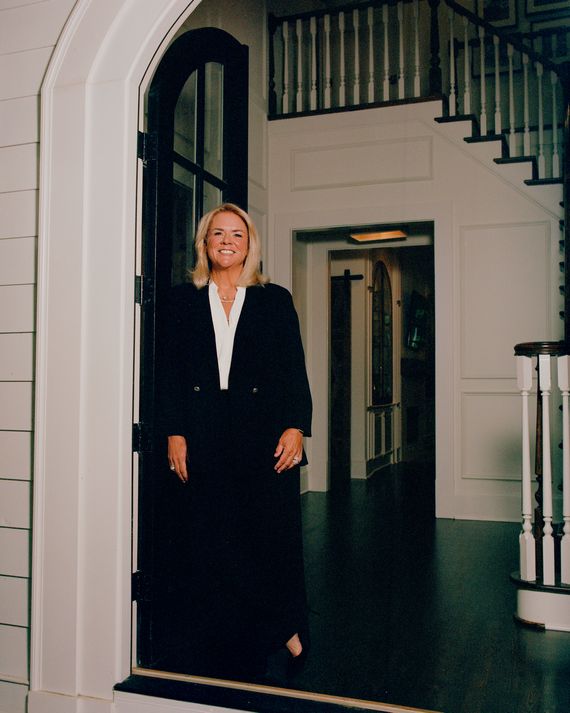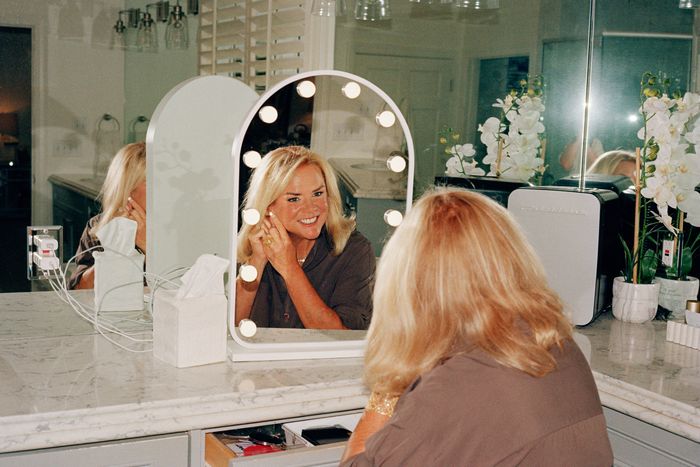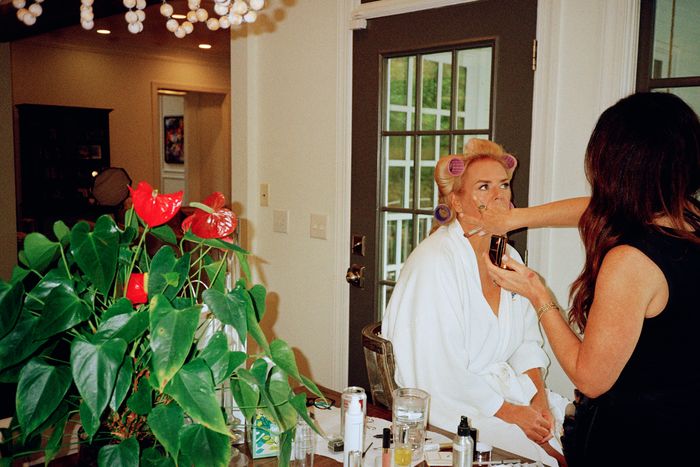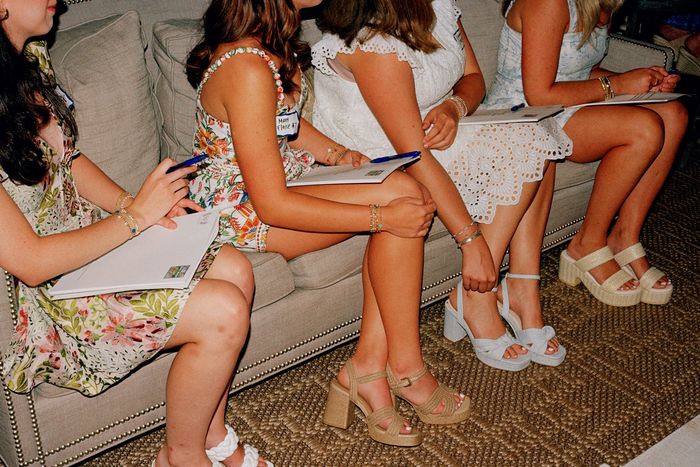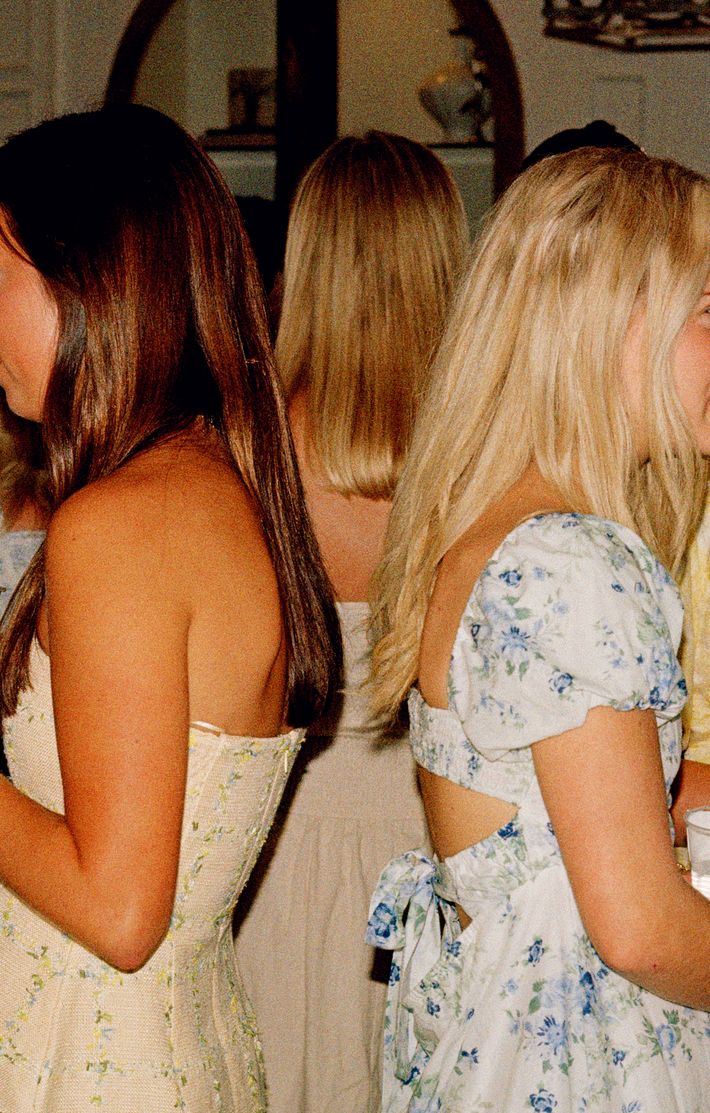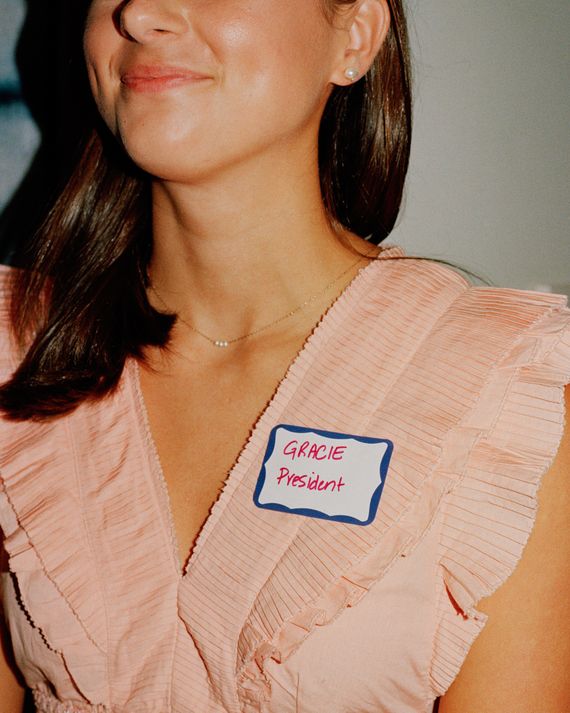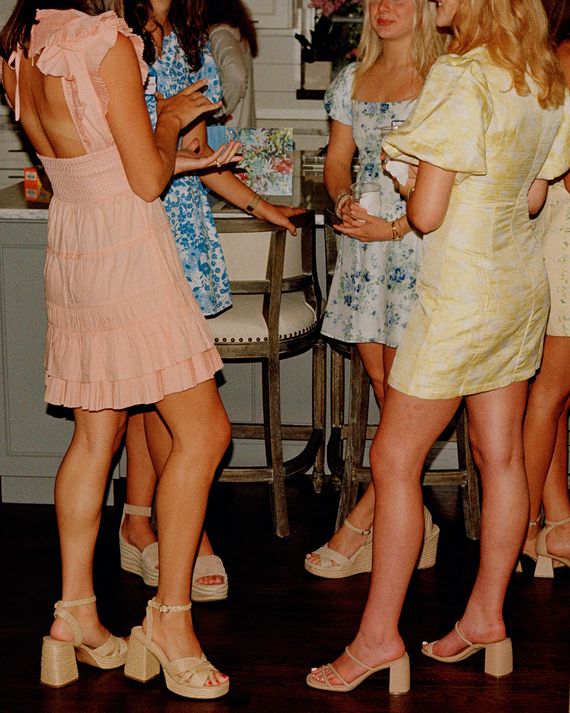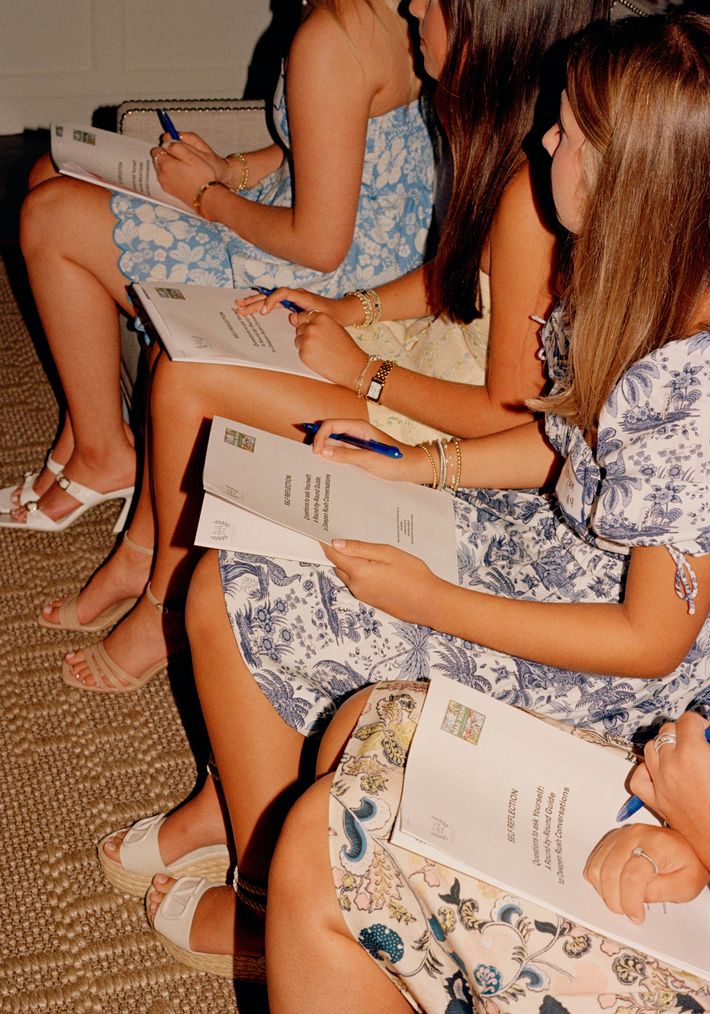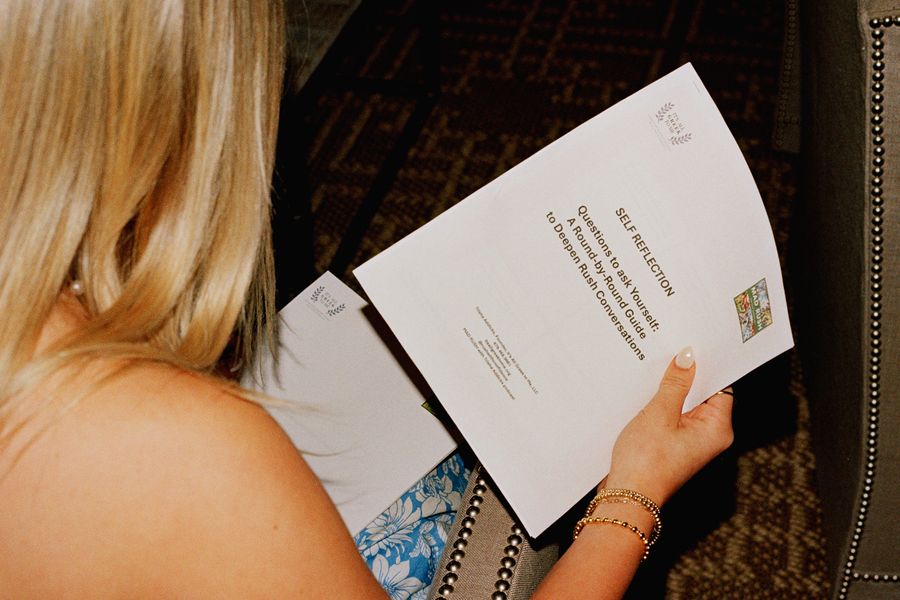
Gracy, a 21-year-old from just outside New York City, always knew she would rush a sorority. Her mother had been in one, and her closest friends are still her sorority sisters. In 2020, during pandemic lockdowns, as schools around Gracy on the East Coast went remote, the ones in the South seemed to be operating normally. She was drawn to the sense of community the women of Kappa Kappa Gamma, Kappa Delta, and Pi Beta Phi managed to hold on to — from what she could see on social media, at least.
Gracy and her mom, Catherine, who spoke to the Cut on the condition of anonymity, knew they’d need help, and they were willing to pay a fortune to get it. As is the case with pricey SAT tutors or elite driving instructors, out-of-state applicants like Gracy can now hire rush consultants to help them get into southern sororities. These coaches capitalize on the rush frenzy — and the wealthy mothers who fork over thousands to secure their daughter’s social standing across state lines.
Catherine had heard about a woman named Trisha Addicks, the first official “rush coach” in the business. Some girls hire her during their junior year of high school, before they receive a college acceptance and two years ahead of rush. When Gracy’s parents compared Addicks’s fees to those of other southern rush coaches who have opened New York City branches, they decided that not only was Addicks the best coach but the most affordable: only $4,500 compared to $5,500.
Photo: Tess Mayer
Addicks started giving rush advice to friends in the ’90s. By 2017, she launched her official consulting business. Now, she’s a social-media influencer, book author, and a full-time coach who employs a 19-person team of mentors she pairs with clients. Addicks consults across the country, and hundreds of her clients have begun moving to southern schools from the tristate area, like Gracy.
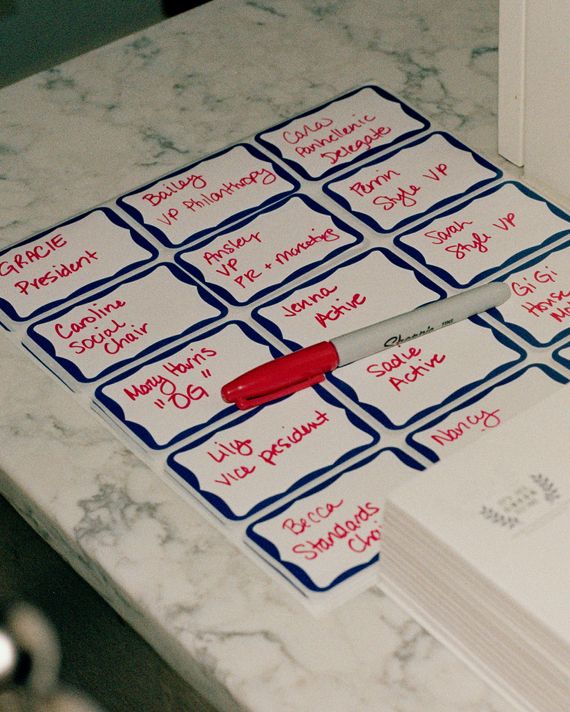
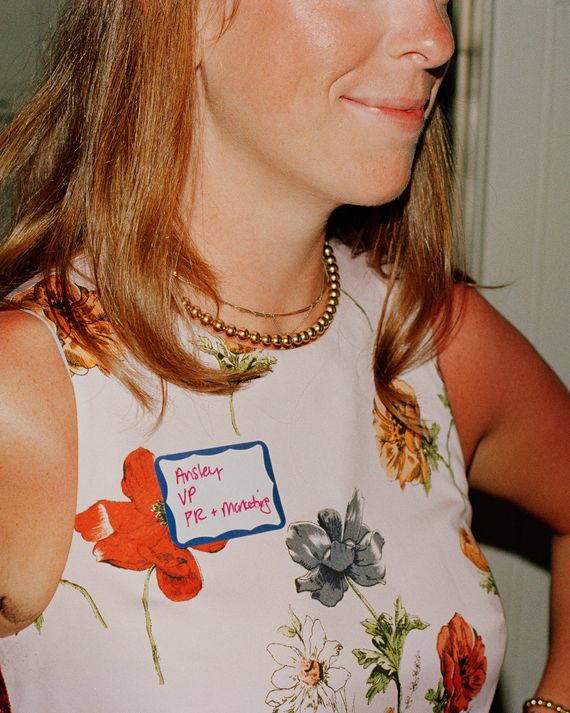
Photo: Tess Mayer
“I know what can tank you,” Addicks promises, because she’s been through it, too. The pressure to join a sorority was just as intense in 1986, when Addicks, who grew up in North Carolina, enrolled at the University of Georgia. Waiting in her dorm’s hallway, she lined up with the other girls all wearing white dresses for bid day, the day they’d learn which sorority offered them a spot. “Everyone opened their envelopes all around me, and they were screaming and really excited. I opened my bid card and it was empty,” Addicks remembers. She rushed again the next year and got into Chi Omega, but she couldn’t stop imagining how different it could have been if she’d had help, the way some of her friends leaned on their mothers for advice.
Photo: Tess Mayer
Rushing a sorority is a long and complicated process, but Gracy figured it would still be the easiest way to find the right kind of friendship on campus — with other white, wealthy, well-connected girls. Signing up comes with a flurry of decisions: a photograph, résumé, and short video must be submitted to each sorority. Then, the summer is spent requesting letters of recommendation from sorority alumni, choosing outfits, and building a social-media page. Once rush week arrives, girls compete against each other for nine days, divided into themed rounds — philanthropy, sisterhood, and preference.
When Addicks first meets a client, she writes down a prediction of which sorority they’ll land. She does not share this list, but so far, she’s never been wrong. “Be who you are looking for is looking for,” says Addicks. In other words, become the person you want to select you. It’s an inspirational quote she lives by and includes in her “Rush Bible,” a handbook tailor-made for each university. (Next May, The Official Rush Bible will be published by Simon & Schuster.)
Photo: Tess Mayer
After meeting with clients like Gracy, Addicks often suggests they hire a photographer to take their portrait in a setting that will be meaningful but not too formal. Gracy’s résumé also needed revamping, so Addicks told her to think of it as a platform for conversation with sorority members, rather than a job interview. Then came the minute-long video Gracy would send to the sororities. She’d choose to answer three questions from a list the sororities provided with options like, What is your most life-changing moment? What are your two favorite words that would describe you? What was your favorite class at high school? Addicks told Gracy to tweak her answers to speak more about her friendships and less about her grades and accomplishments.
After the initial review, Addicks directs her clients to post frequently online. “You want to be someone who looks like a loyal friend,” she writes in her rush bible. The number of photos by yourself should not exceed the number of photos with your friends, and there should be no images of you in a swimsuit: “Archive them. Period.” Photos with sports teammates are fine but not if they’re taken somewhere suggestive, like the beach, Addicks told Catherine.
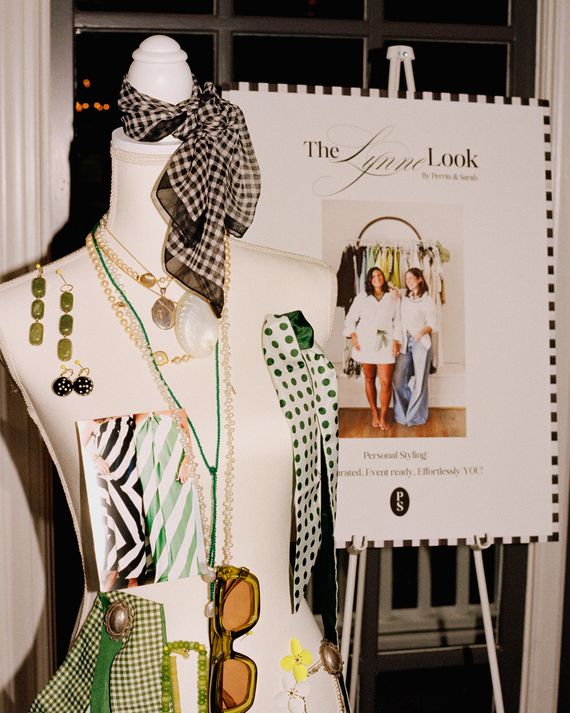
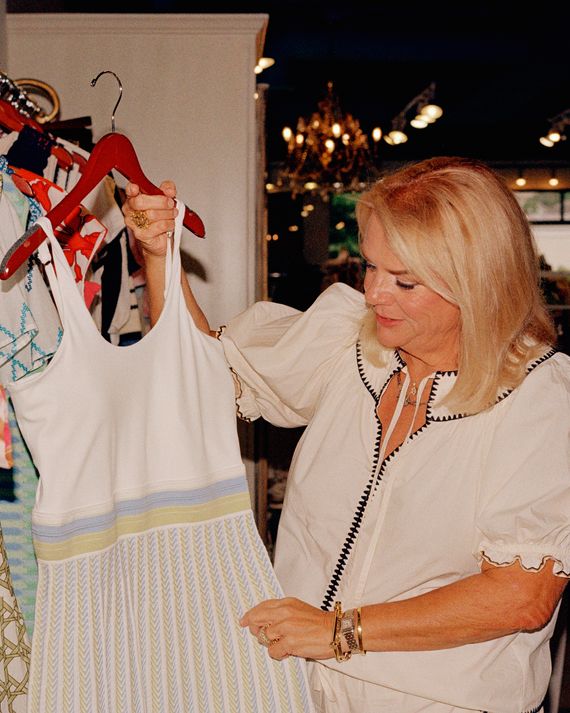
Then comes the essential question: what to wear. It’s a question so fraught with anxiety that it’s become the subject of yearly video swarms like TikTok’s Bama Rush trend, which has launched women like Kylan Darnell and Morgan Cadenhead into viral sensations. Clients who work with Addicks, and have likely already seen Darnell and Cadenhead’s videos, receive brand recommendations and qualitative styling tips. (She tends to tell clients from the Northeast to wear bigger, flouncier, and more conservative ensembles.) The most devoted fly to Addicks’s Atlanta home for in-person feedback at an annual mock-rush event. They arrive in the outfits, hair, and makeup they plan to wear for the real rush later in the summer, and after an initial styling session, Addicks will line them up on the sidewalk. She turns on Taylor Swift’s “Ready for It?” to prepare everyone for the pop music that will play during rush and directs the girls through practice conversations. “For a decent amount of time, they’re all mute. They’re sweaty, they’re nervous. And these are people that we have been working with, so imagine if they hadn’t done any preparing,” Addicks says.
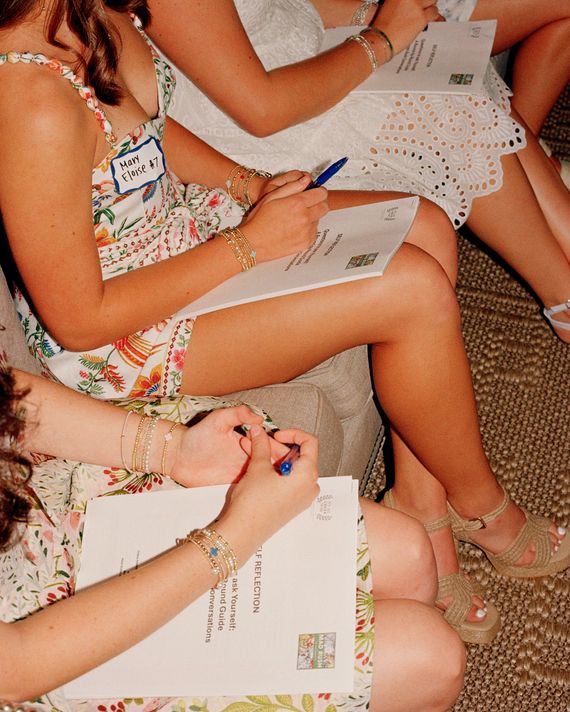
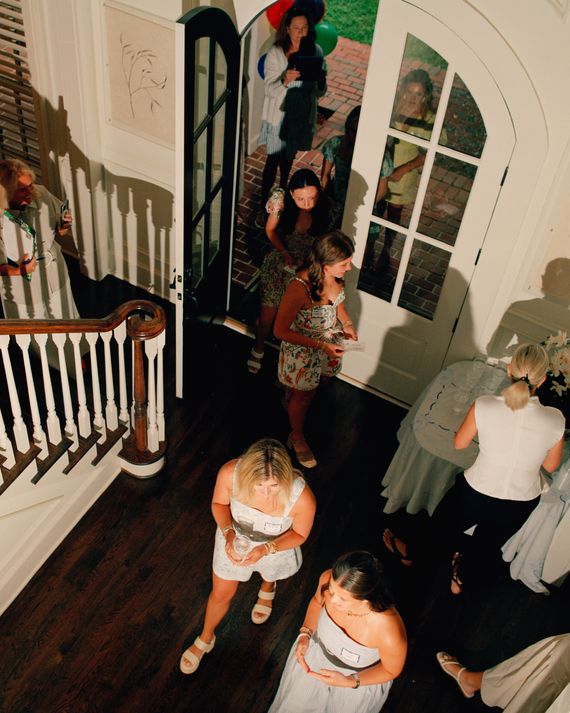
Addicks’s style guide begins with a list of trends that are off limits: booty shorts, low-cut tops, sheer tops, stilettos, over-the-knee boots, inappropriate cutouts, tight or body-con dresses, and dresses that are strapless, one shoulder, or have spaghetti straps. The goal is to be “dynamic enough to be remembered but not too flashy,” Addicks says. “It’s really about expressing your individuality in the right situation.” She recommends a few labels, like Love Shack Fancy, Golden Goose, and Marc Jacobs, and shares a list of what to pack in your purse for rush, ranging from “deodorant (don’t double down on perfume — blech)” to electrolyte packets “without sugar and not too much sodium.”
Photo: Tess Mayer
Photo: Tess Mayer
When Gracy flew across the country for mock rush, she had “everything reviewed.” The clothing she thought would be acceptable was rejected. For the remaining weeks before rush, Gracy was sentenced to trying on dresses in her living room and sending outfit photos to Addicks, who would reply with her thoughts. Another one of Addicks’s clients wanted to wear Dr. Martens, but ended up choosing a different pair of shoes from the style guide after Addicks explained to her that “she was going to step out of her dorm room, and she’s not going to feel edgy; she’s going to think about the fact that she’s wearing Doc Martens and everyone else is wearing sandals.” At its core, sorority recruitment is a test of homogeneity. At the same time, it requires girls to differentiate themselves just enough to be remembered.
Clients may buy the right outfits, but their attitudes need to match. In her rush bible, Addicks suggests getting plenty of rest and minding your manners: “You may have to wake up at 5:30 a.m., and baggy eyes don’t match well with cute outfits”; “Avoid too much caffeine, sugar, or processed foods, which can cause energy crashes, skin breakouts, and bloating”; and “You can be wearing the cutest outfit, but looks only get you so far…DO NOT be a DEBBIE DOWNER or NEGATIVE NELLY. These are the worst types of people.” (Sometimes, though, getting the content of these conversations correct is not critical, Addicks writes: “Always be conscious of your facial expressions … You are always being watched and judged for more than what you say.”)
Photo: Tess Mayer
These conversational pitfalls are organized into another list of “don’ts” in the rush bible. Potential new members should not talk about the six B’s: booze, boys, bucks, brands, bible, ballot. Politics are certainly off the table. If a sorority recruiter brings up one of the six B’s during rush, Addicks trains her girls to steer the conversation. When Gracy was asked where she likes to shop, she played it safe and answered with a boutique near campus — even though she had only peeked into that local shop. Her mom wondered if the recruiters were “trying to evaluate whether you’re going to brag or your socioeconomic status.” Ultimately, they decided it was better that Gracy kept it simple rather than snagging any negative attention.
Photo: Tess Mayer
Photo: Tess Mayer
Advice from coaches like Addicks is certainly useful, but it comes at an extraordinary cost. Implementing the tips is expensive; Gracy and her mother spent more than a thousand dollars on new dresses alone. And when Bama Rush TikTok personalities like Cadenhead — who was dropped by all Alabama sororities she rushed in 2023 — have openly discussed the prohibitive costs that include the $4,000 membership fee, $350 registration fee, the $7,000 to $10,000 living in-house fee per semester, plus the $1,500 to $3,000 Panhellenic council fees to come, it’s tempting for many girls to just look online for rush advice instead.
Photo: Tess Mayer
Photo: Tess Mayer
Still, it might be easier to follow a singular voice. TikTok is saturated with rush-related content, but for any given question you can find contradictory answers, and when Cadenhead rushed again her sophomore year, she used a pageant coach. She also sought tips from Darnell, who, when headed into her junior year of college in 2024, announced the launch of her own coaching business on her social-media pages: “Prepping for rush can feel like a whirlwind, trying to figure out how to act, what to say, and what to wear,” Darnell told the camera as she applied her foundation. “I am going to put your best foot forward.” For $149, she offers a series of videos with guidance for hair, makeup, outfits, and interview tips.
“The rush coach is insurance, it’s five grand or more to guarantee a spot into a house,” says Cadenhead. But a bid is not necessarily guaranteed for those who follow every piece of advice in a rush bible. Other rush coaches who offer similar services at a same or higher price point than Addicks’s did not want to comment on whether they had coached girls who had been rejected. (“Anyone that says 100 percent [of clients get into a sorority] across the board is not being upfront with you,” said one coach.) The most expensive services offer unlimited 1:1 coaching with the a chief consultant, a full social-media edit, vocabulary sheets for conversation during rush, and care packages sent to your dorm (including custom stationery to write thank-you notes).
“I’m not being defensive about this at all, but if you break down the number of hours that we spend with our clients, the amount of research, and the amount of overhead, it’s actually a very, very low hourly rate,” Addicks says. She spends at least 20 hours with each client, sometimes more for the clients who require her attention five times a day. Then there’s constant attention she gives clients during rush week and the time she spends maintaining connections with “people on the ground” (members of sororities). “I am very aware that it’s expensive and a large majority of people can’t afford it,” she says.
Photo: Tess Mayer
On top of everything else, there’s an emotional cost: the price of assimilation, the stress of incessant evaluation, and the bruises of rejection. “The girls treat rush like it’s life or death,” Cadenhead says. “If they don’t get a house they want, they will drop completely from recruitment and go into a depressive episode.” Some of those disappointed by their rush process transfer to another university before classes begin.
Ultimately, Addicks’s clients, like Gracy and Catherine, believe it’s all worth the price. With the coaching help, Gracy found herself in the unique position to choose her sorority, not the other way around. Before she opened the envelope, she pressed record to send a video to her mother. When she read the sorority’s invitation, her eyes lit up, and she jumped up and down. Her mother, only five states away, took a screenshot for their family Christmas card. It was “pure joy,” Gracy says, “to know that I worked so hard, and I put so much time and energy to get that card and open it up. It’s so happy. It’s just so rewarding.”
Photo: Tess Mayer
